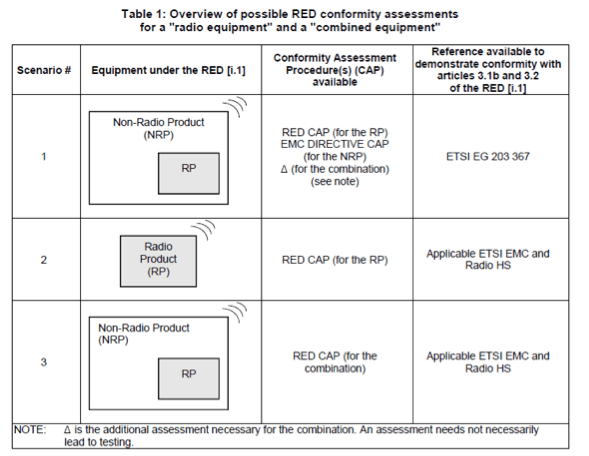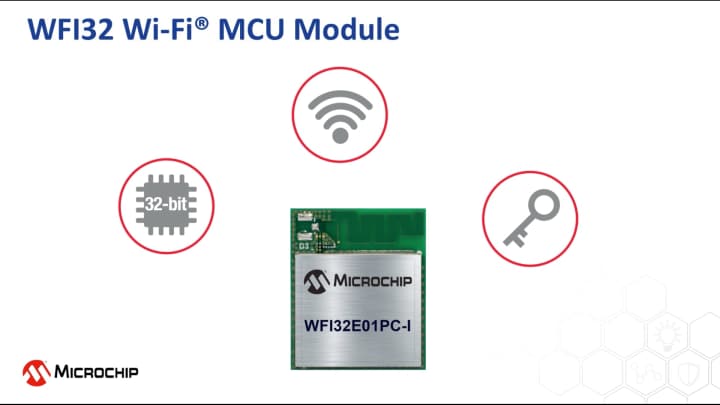Live Chat
Need Help?
Privacy Policy1. What is the Radio Equipment Directive (RED) 2014/53/EU?
RED 2014/53/EU establishes a regulatory framework for placing radio equipment on the market in the European Union (EU). It ensures a single market for radio equipment by setting essential requirements for safety and health, electromagnetic compatibility and the efficient use of the radio spectrum.
If you manufacture end products with radio communication capabilities that ship into the EU market, you are responsible for ensuring that your products comply with RED. We provide the necessary technical support to enable you to complete your regulatory compliance obligations for your end products.
The following FAQs will help outline your obligations and our support for RED compliance.
Please refer to the European Commission’s FAQs and Guide to the Radio Equipment Directive 2014/53/EU for additional information.
Note: references to end product manufacturers are typically our clients who use our Radio Frequency (RF) Integrated Circuits (ICs) and modules in their products.
2. What is a RED-certified module?
A RED-certified module is a component that is already certified to meet the RED standard requirements. However, when integrating the RED-certified module into the end product, you must subject the end product to the assessment to comply with the RED standard requirements. A RED-certified module saves time and cost compared to a chip-down-based design. For a chip-down-based RF design, you are required to redo all the tests to comply with the RED standard.
3. What is my responsibility as an end product manufacturer to meet the RED standard requirements?
You should review RED and other referenced standards in their entirety to fully understand what is required for RED compliance. A few of these responsibilities are summarized below with respect to the end product (i.e. not our ICs or wireless modules):
- All end products with built-in radios must be assessed under RED
- You should make the updated Declaration of Conformity (DoC) available for compliant products
- The user manual for your end product must be updated with RF specifications such as frequency range, transmit output power and software version
- Your end product must meet traceability requirements by providing contact information and website address, for example
- You should be prepared for market surveillance activities and to comply with the latest regulations
Please refer to the harmonized standards for RED for more information.
4. How has Microchip progressed towards compliance to RED?
We have a long history of certifying radio module products to the latest standards and maintaining our compliance obligations with regulatory bodies worldwide, including ETSI. We are also a member of RED Compliance Association (REDCA) and have been working closely with several regulatory compliance laboratories worldwide. With regards to RED, we’ve monitored the progress of various ETSI standards (both draft and harmonized) and identified laboratories worldwide that have test and measurement systems to perform the new tests mandated by the standards.
Below is a list of standards applicable to our RF products.
Refer to the Regulatory Approval Documentation and Declaration of Conformity, which you can find on the product pages for the products you are interested in, for the applicable standards and their versions as stated in section 7.
5. What steps should I take to comply with RED?
We strongly recommend that you take the following steps to comply with RED:
- Familiarize yourself with RED and new standards from ETSI to identify the standards relevant to your end product.
- Identify laboratories and begin executing RED compliance testing for your end products that utilize our RF ICs and modules.
- Complete compliance testing, collateral and logistical updates.
Creating and updating collateral and making changes to packaging labels and other materials may take time. Starting early will help you reach compliance in a timely manner.
The European Commission’s Blue Guide indicates the necessary responsibilities of a manufacturer, including marking and label implementation and details for placing radio equipment into the EU market.
6. How will Microchip help me comply with RED? What is Microchip's responsibility in helping my end product comply with RED?
You can perform compliance testing in multiple ways as shown in the table below, which has been reproduced from ETSI Guide EG 203 367 V1.1.1 (2016-06).

Based on RED conformity assessment, you can perform ETSI compliance testing as follows:
- Testing Approach #1: testing the entire end product, including the RF module, as “combined equipment”. Our RF ICs and modules are simply used as components in your end product.
- Testing Approach #2: testing our RF module as a “radio product” shown in scenario 2 and leveraging the test results in the end product Conformity Assessment Procedure (CAP) shown in Scenario 1. Note that Section 6.1 of the ETSI Guide provides some criteria for leveraging the results. We recommend reviewing the entire document. For this approach, you should utilize the test reports and the module interface information in the product data sheet to determine what would constitute an equivalent host and which variations are allowed in the end product to determine if additional assessment is required.
You can use the conformity assessment performed for a single radio product as part of the conformity assessment for that radio product combined with a non-radio product. If the manufacturer of the combined equipment installs the radio product in a host non-radio product in equivalent assessment conditions (i.e. host equivalent to the one used for the assessment of the single radio product) according to the installation instructions for the radio product, then no additional assessment of the combined equipment against article 3.2 of RED is required.
To facilitate the above scenarios, we will provide you with the following collateral support for RED compliance.
Note that we may choose not to have some modules assessed under RED. These modules would typically be modules that do not have a shield or do not carry a CE mark today.
7. Is a laboratory mandatory to achieve regulatory certification?
A laboratory is mandatory to achieve regulatory certification. If you do not have a recognized accredited testing laboratory within your organization, then you are required to test your product through an external laboratory. For RED certification, you must ensure that your product conforms to all the RED essential requirements. You can achieve this either by testing with a harmonized standard or a non-harmonized standard. We suggest you test the end product with the harmonized standard, but for products that you need to test with a non-harmonized standard or method, you must follow an EU type-examination path while all technical details or testing reports must be reviewed by a notified body. For more details on the conformity assessment procedure, you can refer to Annex IV in the Blue Guide on the implementation of EU product rules.
8. What does the test lab require?
The test lab expects a detailed product guide and the application of the product. Usually, the lab will request detailed design information such as the schematic, block diagram, theory of operations, application use cases, hardware samples and accessories.
For RF testing, labs do require a tool or test firmware to control the radio for a static RF test. This requires you to change some parameters such as operating channel, data rate and transmit power.
For EMC or other testing, labs require normal application firmware for use case testing.
We recommend you get in touch with the test lab in advance to identify the applicable test standards for your end product.
9. What criteria do I need to consider when selecting a laboratory for RED conformity assessment/compliance testing?
Once you are familiar with the relevant ETSI specifications governing RED assessment of your end product, you must schedule laboratory time for testing. Please check with the laboratory you are considering to ensure they are ready to perform RED compliance testing.
10. What is your current list of RED-assessed modules for use in Testing Approach #2 and where can I find a product's RED approval documentation?
You can find an individual product's certifications on the respective product page. Certification documents are located under the Certifications category in a zip file titled "Regulatory Approval Documentation" within the Documents section.
Introducing Microchip's WFI32 Wi-Fi 32-bit MCU Module
This video introduces Microchip’s first Trust&GO Wi-Fi® 32-bit MCU, which has market leading MCU functionalities and is pre-provisioned for cloud platforms.

Introducing Microchip's WFI32 Wi-Fi 32-bit MCU Module
Introducing Microchip's WFI32 Wi-Fi 32-bit MCU Module
This video introduces Microchip’s first Trust&GO Wi-Fi® 32-bit MCU, which has market leading MCU functionalities and is pre-provisioned for cloud platforms.

Wi-Fi® Smart Device Enablement Kit
Wi-Fi® Smart Device Enablement Kit
[MNV378B] Microchip’s new Wi-Fi Smart Device Enablement Kit makes it even easier to allow customers to control their apps with Alexa voice commands.

AVR-IoT WG Development Board Introduction
AVR-IoT WG Development Board Introduction
This video provides an overview of the AVR-IoT WG Development board. The AVR-IoT WG board was designed to be extremely easy to use, secure and low power. With this device, you will be able to connect your IoT node to the internet in 30 seconds or less.

PIC-IoT WG Development Board
PIC-IoT WG Development Board
This video provides an overview of the PIC-IoT WG Development board. The PIC-IoT WG board was designed to be extremely easy to use, secure and low power. With this device, you will be able to connect your IoT node to the internet in 30 seconds or less.

Microchip’s New Bluetooth® Audio SoC with Sony’s LDAC™ Technology
Microchip’s New Bluetooth® Audio SoC with Sony’s LDAC™ Technology
[MNV 348] Create high-resolution audio devices using Microchip’s new bluetooth® audio SoC with Sony’s LDAC™ technology

Smallest Sub-GHz Module For Low-Power Wireless Sensing
Smallest Sub-GHz Module For Low-Power Wireless Sensing
[MNV366] Develop low-power wireless sensor nodes with the industry’s smallest regulatory-certified sub-Ghz module

The Industry’s Lowest-Power LoRa® System-in-Package
The Industry’s Lowest-Power LoRa® System-in-Package
[MNV355] Accelerate development of remote IoT nodes with the industry’s lowest-power LoRa® system-in-package family

Easy Connectivity with Dual-Mode Bluetooth® Module
Easy Connectivity with Dual-Mode Bluetooth® Module
[MNV300] New dual-mode Bluetooth® module features enhanced security and easy-to-use interface.

Microchip’s RN4870 & RN4871 Modules for Bluetooth® Low Energy 5.0 Core Spec. w/ ASCII-style Commands
Microchip’s RN4870 & RN4871 Modules for Bluetooth® Low Energy 5.0 Core Spec. w/ ASCII-style Commands
[MNV287] Microchip announces next-generation Bluetooth® Low Energy solutions with easy-to-use interface and embedded scripting capability.

Dual-Mode Bluetooth® SoCs and Modules for High-End Audio
Dual-Mode Bluetooth® SoCs and Modules for High-End Audio
[MNV288] Next generation dual-mode Bluetooth® audio products from Microchip.

Microchip’s First LoRa™ Module is IoT-Ready
Microchip’s First LoRa™ Module is IoT-Ready
[MNV238] Microchip's LoRa™ technology wireless module enables IoT and is the first module for ultra-long range and low-power network standard.

Advanced Bluetooth Audio SoC for Wireless Earbuds
Advanced Bluetooth Audio SoC for Wireless Earbuds
The IS2066B is a low power Bluetooth Audio System-on-Chip (SoC) with Microchip’s Wireless Stereo Technology (WST) for Bluetooth Audio applications targeting wireless earbuds.

WFI32 Wi-Fi® MCU Module Development Tools Introduction
WFI32 Wi-Fi® MCU Module Development Tools Introduction
Along with the widely adaption of IoT technology in industrial areas, like logistics, heath care, utility, and high-end manufacturing, IoT designers are paying more attention at improving the reliability, security, and functionality of the IoT system design, because reliable and robust IoT data is critical to improve the efficiency of operations, quality of services, and business income.
Microchip’s highly integrated WFI32 Wi-Fi MCU module is safe, powerful, and reliable IoT platform, which can be used to design various industrial IoT systems with high-performance MCU capabilities and robust and safe IoT connection.
